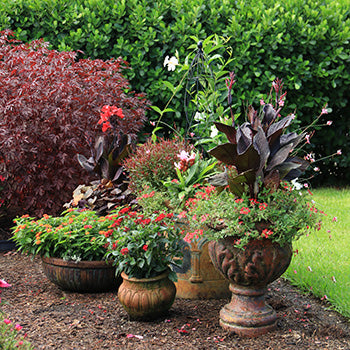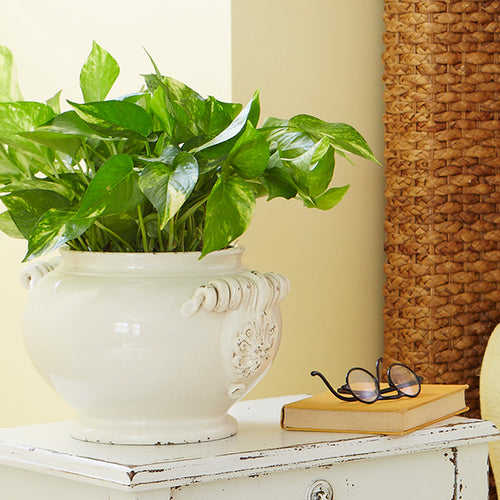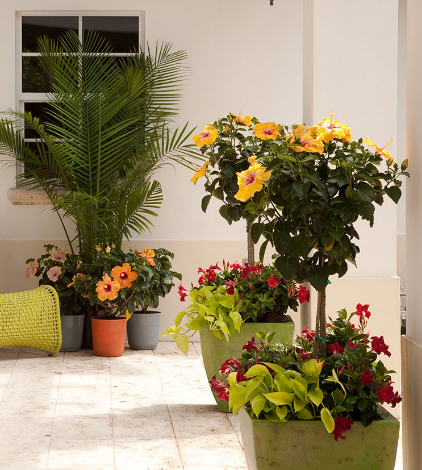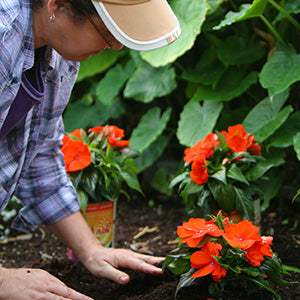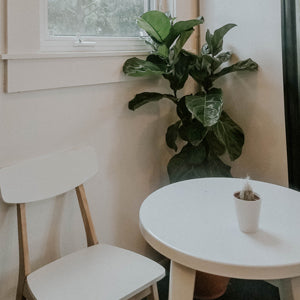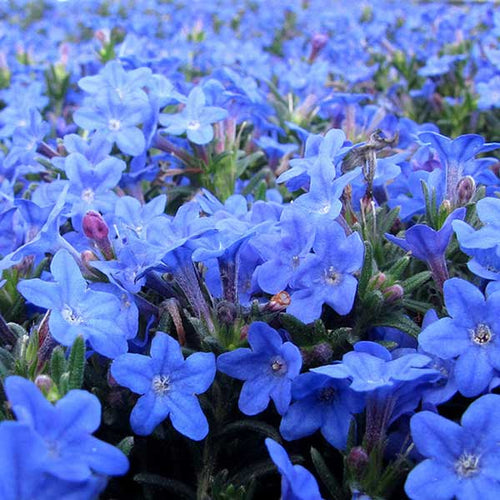Mandevilla is one of the most versatile plants you can grow in your summer garden, and that’s somewhat surprising, considering a few years ago there were only a couple of varieties available. But thanks to hard-working plant breeders, you can get gorgeous mandevilla flowers in a range of colors, as well as plants that grow different sizes, including vines. To get just the right look for your favorite spaces, it’s important to select an appropriate variety. We share our tips for picking the best mandevilla, as well as mandevilla care.
 Mandevilla Types
Mandevilla Types
Today, easy-care mandevilla come in two main categories: mandevilla vines and mandevilla.
Mandevilla vines
Are the old-fashioned type, which more gardeners tend to be familiar with. These plants quickly twine up and around trellises, arbors, and other structures, making them valuable for adding color vertically. Mandevilla vines climb by wrapping their new growth around a support. It’s important to know they grow in a clockwise or counterclockwise fashion, so pay attention when you train them. If yours grows clockwise, and you wrap it counterclockwise around its support, your mandevilla will unwind itself.
Different varieties of mandevilla vines grow different heights; the largest varieties tend to climb between 10 to 15 feet tall in a gardening season. Because they are vines, you can train them to grow horizontally or vertically.
Mounding mandevillas
Tend to be newer selections. Rather than growing up, they form tidy mounds, making them ideal for use in garden and landscape beds and borders, as well as in container gardens. Most mounding mandevillas grow 12 to 18 inches tall and and don’t need supports to climb. Because they have more of a bushy habit, they’re also choices for hanging baskets and window boxes.
Mandevilla Flower Colors
Originally, pink-flowering mandevillas were most common, such as the old variety ‘Alice Dupont’, but over time, plant breeders have expanded the color range. Now you can find mandevilla flowers in all shades of pink, from soft, cotton-candy pink to bright and bold hot pink. There are pure white and bright red mandevilla varieties, as well. There’s even an apricot-colored variety available.
Shopping for Mandevilla
When you’re at your local garden center shopping for mandevilla, look for lush plants with lots of dark green leaves. Plants that have a lot of yellow leaves (especially in the middle or at the top of the plant) may be stressed and less healthy. The presence of flowers doesn’t necessarily show a plant is because most are sold in full bloom. Selecting a mandevilla with flowers helps you ensure you’re getting the exact color you want.
Another way you can look at a mandevilla’s health is to slip it out of its pot and look at the roots. Healthy roots are firm and white or creamy. Unhealthy roots will look yellowed or brown and be mushy. If the plant is suffering from rot, you may detect a foul odor in the potting mix, particularly toward the bottom of the pot.
You’ll probably see mandevilla vines grown two ways: with trellises or with teepees. Trellised plants are better for growing on fence or structure you want them to fan out. Teepeed plants are better suited for places you can grow them vertically, such as up a pole or trellis.
Mandevilla Care
Heat- and drought-tolerant mandevilla plants require little care once they’re planted and established. All varieties do best in a spot with sun -- at least 6 to 8 hours of direct sun each day. They also like well-drained soil or potting mix. (Tip: If you grow mandevilla in containers, use a potting mix rather than garden soil, which can lead to root rot or disease problems.)
Mandevilla require regular pruning, though you can prune them at any time if they start to get too large or grow out of bounds. Mandevillas grown in shade or part shade benefit from regular pruning to keep them from lanky and leggy.
Mandevilla in the ground typically don’t require fertilizing as part of their care regimen, but potted plants benefit from fertilizer to keep them blooming profusely. The easiest way to fertilize is to mix some timed-release fertilizer into the potting mix when you plant; these products continue to slowly add nutrients to the soil over time. You can also fertilize regularly with a water-soluble product you mix with water. No matter what type of fertilizer you use for your mandevilla, follow the directions on the product’s instruction label to know how much fertilizer to use.
Learn more about fertilizing plants.
These are tropical and don’t like frosty temperatures. If you live in an area that experiences frequent frosts, you need to consider them as annuals or bring them indoors for the winter to care for as houseplants.
Get tips for saving tropical plants like mandevilla before winter.
Get winter care tips for your mandevilla.
Mandevilla Varieties
Today there are many varieties of mandevilla available at local garden centers, mass merchandisers, and home improvement centers. Some of the most popular types include:
Alice Dupont mandevilla:
This was one of the first varieties that was widely available. It features large pink flowers and textural leaves. It’s not as floriferous as newer selections.
Dipladenia:
Dipladenia is another name for mandevilla.
Summervillea mandevilla:
Summervillea is an especially strong mounding variety that shows off a profusion of rich red flowers. We’ve found that, in our Miami, Florida, Trial Garden, Summervillea holds up better than other varieties as a perennial.
Sun Parasol mandevilla:
The Sun Parasol series of mandevilla, bred by Japanese company Suntory, features the widest range of flower colors available, from pure whites to deep, rich crimson reds. There are several series in the Sun Parasol mandevilla family; different series have different flower sizes.
Variegated mandevilla:
There are several selections of mandevilla available with variegated foliage (such as Fire and Ice Fury). While their leaves add extra interest, we’ve found from our testing that most are not as easy to care for as their green-leafed counterparts.









